In the current, very fast-changing technological world, IT environments need high-speed computing and data center infrastructure systems that have no match in terms of quickness, efficiency, or scalability. This is why Mellanox Infiniband Switch Technology has been developed: to cater to these performance requirements, which are considered stringent in modern days. This piece of writing examines what Mellanox Infiniband switch technology can do by looking at its features, benefits and uses. By knowing how this state-of-the-art works at its basic level or even higher levels, readers will be able to see where it could drive innovation alongside increasing data throughputs while also enhancing general system performances. Come with us as we try to understand more about the complex nature behind mellanox infiniband switches and why they are important for future developments in high-speed networking as well as computational efficiency.
What is an Infiniband Switch?

Understanding the Basics of Infiniband
A high-speed and low-latency networking technology used mostly in the HPC environments is called Infiniband. It uses a bidirectional point-to-point serial link, which allows for significantly higher data transfer rates than conventional Ethernet connections. Within this design, these switches help nodes communicate with each other across clusters. Therefore, they have good support for congestion management efficiency and dynamic routing among many other features, such as minimal latency when handling traffic between different points of presence (PoPs) within their networks, thus creating scalable networks that can handle the performance requirements of complex computational workloads like scientific simulations or large-scale analytics involving big data sets alongside real-time processing thereof.
How an Infiniband Switch Works
To work effectively, an Infiniband switch takes data packets from their source node and then sends it to the right destination node in a network. Virtual lanes, quality of service (QoS) techniques and efficient routing algorithms are combined so as to achieve the best possible flow of information even under heavy congestion conditions. Typically, this type of switch have ports designed with multiple high-speed data transfer capabilities ranging between 40 to 200 Gbps per port. These devices also contain low-latency switching fabrics that reduce the period taken by information across a network thereby ensuring fast communication speeds as well as fewer packet losses. Besides that, advanced congestion management mechanisms help in preventing bottlenecks, whereas adaptive routing dynamically selects paths that are currently performing well based on the real-time state of the network, hence improving the reliability and overall performance of a system.
Benefits of Using Infiniband Switches
Infiniband switches do have a few features that make them the best option for high-performance computing environments:
- Little Time Difference: Infiniband switches are designed for ultra-low latencies which is necessary for quick processing and real-time analytics in some programs. This will make sure that distributed computing tasks work faster through communication with nodes at the right time.
- High Bandwidth: Infiniband switches can support bandwidth-intensive applications because they have ports transferring data at rates of between 40 Gbps and 200 Gbps per second. As such, this makes them suitable for use in large-scale simulations or big-data analytics where there’s a need for heavy input-output operations.
- Changeability: The architecture of the InfiniBand switch allows it to be used in supercomputers or small clusters, thereby providing organizations with an opportunity to scale their network infrastructure as required by different computational needs over time without any limitations at all.
- Effective Traffic Control: These types of switches are equipped with advanced congestion management techniques to handle huge amounts of information without causing traffic jams, which may slow down other areas within the system even when dealing with heavily loaded networks. This feature alone ensures uniform performance levels under all conditions where demand is high.
- Service Quality (QoS): For QoS purposes, critical traffic should be given priority over less important ones on any link or node throughout its path – something achieved by infiniband switches by incorporating QoS mechanisms into them. These mechanisms help prioritize tasks according to their significance, thus ensuring better performance levels are attained, especially where mission-critical apps cannot tolerate delays due to latency control issues at either end, among others.
These advantages work together making InfiniBand-based network infrastructures strong, fast and reliable; therefore making these benefits essential whenever speed is needed while exchanging information quickly over very short distances.
Why Choose Mellanox Infiniband Switches?

Features of Mellanox Infiniband Switches
Mellanox Infiniband switches are among the best options for high performance computing (HPC) environments and data centers because they have many advanced features.
- Short Delays: Mellanox Infiniband switches usually deliver exceedingly low latency—below one microsecond—which is necessary for real-time data processing, high-frequency trading, and other applications that require speed.
- Fast Data Transfer: These switches can transfer up to 200 gigabits per second per port. This ensures that there are no bottlenecks when it comes to running applications like machine learning or genomic sequencing, where large amounts of information need to be moved around quickly.
- Flexibility: Their scalability allows them to support hundreds of nodes, making them ideal for growing infrastructures and expanding computational power needs.
- Sophisticated Congestion Control: Advanced congestion control mechanisms integrated into these devices help prevent traffic jams caused by too much data trying to pass through at once, thus maintaining high-performance levels even under heavy network loads.
- Smart Routing: By using intelligent adaptive routing algorithms, Mellanox switches are able to optimize data paths on the fly thereby reducing overall network latency while also improving its general performance.
- Improved Quality Of Service(QoS): They come with built-in quality of service features that enable prioritization of critical traffic, ensuring that all necessary bandwidth required for optimal performance is reserved only for such mission-critical applications.
These capabilities ensure that the robust, high-speed, reliable networks offered by Mellanox Infiniband switches meet the demands placed on them by current cutting-edge HPCs and DCs.
Comparing Mellanox with Other Brands
Here are some of the core variations and advantages that can be seen between Mellanox InfiniBand switches and other industry leaders like Cisco, Arista, or Juniper:
- Latency: Mellanox switches demonstrate low latency, usually under one microsecond. This is way better than most Cisco or Arista switches, whose latencies typically range from 3 to 10 microseconds. Low latency is crucial for applications that need rapid data transfer and real-time processing.
- Bandwidth: Mellanox beats many competitors with its 200 Gbps in terms of data transfer rate per port. Nexus switches by cisco and 7000 series by arista generally support up to 100 Gbps per port hence making mellanox better for bandwidth-intensive applications.
- Scalability: It offers excellent scalability where hundreds of nodes can be supported at a go without interruptions. Although Cisco as well as juniper have scalable solutions too but mellanox is usually recognized for its simplicity in deployment together with seamless expansion capabilities.
- Congestion Control: Under heavy network loads advanced congestion control mechanisms are implemented on mellanox switches so as to maintain high performance levels. However, this doesn’t mean that Data Center Switches manufactured by Cisco lack robust congestion controls. The only difference is mellanox algorithms were specifically optimized for HPC & AI workloads.
- Adaptive Routing: Mellanox uses intelligent adaptive routing for optimizing real-time data paths; this feature may not be highly developed in Arista or Juniper, which have adaptive routing functionalities but might not match the efficiency of Mellanox in minimizing latency while maximizing performance.
- Quality Of Service (QoS): Built-in QoS features within Mellanox help ensure effective priority setting for critical traffic data. Nevertheless, it should also be noted that QoS functions offered by Cisco and Juniper are similar, if not the same, as those provided by Mellanox, except for fine-tuned implementation for high-demand environments like HPC and data centers.
To sum up, Mellanox performs better than any other brand when it comes to latency, bandwidth, scalability, congestion control, adaptive routing, and QoS, making it ideal for modern HPC needs.
Real-World Applications and Use Cases
The reason why high-performance computing (HPC) environments rely heavily on Mellanox switches is their low latency, high bandwidth, and solid congestion control methods. For example, in scientific research, faster processing and analysis of data are made possible by Mellanox’s high-performance interconnects, leading to breakthroughs in areas such as genomics, climate modeling, and astrophysics.
When it comes to artificial intelligence (AI) applications, training complicated machine learning models requires fast connectivity, which is provided by these switches. To support its GPU-accelerated AI workloads, NVIDIA, among other organizations, relies on Mellanox technology, thus resulting in shorter training times and increased precision of models.
Mellanox solutions have huge benefits for data centers. In order to guarantee smooth scalability as well as reliable performance, large enterprises, together with cloud service providers, use Mellanox switches. Therefore, through optimization of cloud infrastructure by companies like Microsoft using Mellanox products, they are able to achieve efficient management of data traffic coupled with superior quality of service.
How to Select the Right Infiniband Switch?

Factors to Consider
To choose the correct InfiniBand switch for your requirements, you need to consider a number of factors. Here they are:
- Performance Requirements: Latency and Bandwidth need to be checked against what is required by the given application’s speed. For high-performance computing (HPC) or artificial intelligence (AI) workloads, low latency and high bandwidth are both necessary.
- Scalability: The future growth potential of your data centre or HPC environment should be assessed with respect to the scalability offered by different switches; this means selecting those that support large numbers of ports and have various topologies options that can easily adapt to later expansion needs.
- Congestion Control: A good switch will always have some way to manage traffic jams on networks – often caused by too much simultaneous use – so check whether any provision is made here too. Congestions within such environments could bring about severe bottlenecks, thus leading to poor data flow rates and performance levels dropping considerably.
- Integration – Hardware and Software: It is always advisable to go with switches designed in such a way that they easily fit into already existing hardware/software set-ups without causing much disruption during deployment stages; therefore, consider only those types compatible with current network arrangements while still allowing open standards support thereby making their administration more friendly.
- Adaptive Routing: This feature enables routers/switches to automatically change paths followed based on prevailing conditions within networks at specific times, thus boosting reliability plus efficiency since it reduces delays by minimizing distances traveled across links. High-speed connections like these require this capability most especially when dealing with huge volumes where multiple hops might be involved before packets reach intended destinations.
- Quality Of Service (QoS): Look out for QoS capabilities that prioritize certain types of traffic over others when resources become limited; this ensures critical applications continue running smoothly even during peak hours when bandwidth tends to get stretched thin. Therefore, robustness in terms of providing effective prioritization mechanisms should not be underestimated because it could greatly impact service delivery levels, for example, voice or video streaming services.
- Vendor Support and Reliability: It’s always good practice to select products from vendors who have built a reputation for producing reliable devices coupled with strong after-sales support. Try also finding out whether there are any industry certifications held by such suppliers, plus read through reviews written about them by other users operating in similar environments as yours.
Evaluate these considerations so as to make an informed choice on which InfiniBand switch will deliver the desired performance, scalability and dependability required within a high demand computing environment like yours.
Understanding Port Configurations
In an InfiniBand switch setup, port configurations are important for optimizing network performance and ensuring efficient data transfer. Consider the following:
- Types of ports and speeds: Normally, InfiniBand switches have various types of ports, such as QSFP or SFP+, and different speeds, including 40Gbps or 100Gbps. Thus, make sure that your port configuration matches what is required by the devices in your network and the expected data throughput.
- Density of Ports: When a switch has many ports, it allows for more connections to be made on one device; this eliminates additional hardware needs while simplifying overall architecture design. Reflect on where you are now concerning networks vis-a-vis future projections, then select switches with appropriate densities.
- Link Aggregation: Combining multiple links into one logical link may improve performance and provide redundancy. Verify if the switch supports link aggregation and how it can be utilized to load balance traffic across different paths, thereby increasing fault tolerance.
Knowing these things about port configuration will enable you to make better decisions that enhance the scalability and performance of your InfiniBand network.
Requesting a Quote for Your Infiniband Solution
To get an accurate and complete proposal for your InfiniBand solution, you must provide in-depth information. Below are some steps you can follow:
- Specify the requirements: Clearly state what you need from the network; for instance, the type of ports, their speeds and total capacity. If there is anything else that matters in your setup like link aggregation or many ports per switch then this should not be left out.
- Provide network topology: Give a description of the current architecture as well as future scalability plans plus numbers of servers/storage devices etc., connecting through InfiniBand switch/es.
- Detail performance metrics: It would be helpful if you can mention expected data throughput rates among other latency figures which must also include any other benchmarks imperative to be met by your network. This way suppliers will know how best to solve them according to their capabilities.
- Indicate industry standards & certifications required: You may want to communicate about some specific industry qualifications or compliance standards that should be met by all proposed solutions so that they can align with your operational protocols.
- Ask for support services information: Find out more about customer care support levels, warranties offered, and service options available; these might involve onsite support or remote diagnostic facilities, together with software updates, among other things.
Following these steps while providing comprehensive details ensures that the quotations received are designed specifically for use within a high-demand computing environment like yours.
What is NDR Infiniband and what is its impact on networking?

Introduction to NDR Infiniband
NDR InfiniBand, or Network Data Rate InfiniBand, is the most recent improvement in high-performance computing (HPC) network technology. It can transfer data with a speed of 400 Gbps; hence, it has more bandwidth and lower latency than any other previous version. This increase in performance permits quicker processing of information and better efficiency in machine learning, artificial intelligence (AI), and large-scale simulations among other data-centric applications. The NDR InfiniBand architecture employs advanced error detection and correction approaches, ensuring very high reliability alongside the integrity of data being transmitted through it. Moreover, this technology has been designed in such a way that it can scale up easily, making integration with existing networks possible, thus meeting current performance requirements while allowing for future expansion at the same time. Such next-generation technologies are expected to transform data center operations by offering strong foundations for contemporary computational demands.
Benefits of NDR over Previous Technologies
NDR InfiniBand gives many benefits over HDR (High Data Rate) technology. To begin with, the speed of data transfer has been increased to 400 Gbps, which makes it suitable for high-performance computing. This widened bandwidth allows massive amounts of information to be processed more efficiently, thus meeting the requirements that come with data-intensive applications like AI and machine learning systems. Secondly, NDR InfiniBand has lower latency, which is essential in real-time responsive processing of data by programs. With decreased access times between nodes due to this reduction in delay before the transmission starts, overall system performance will be optimized. Additionally, advanced error detection and correction methods are included in NDR, leading to higher levels of reliability and integrity for handled or transmitted data, ensuring accuracy. Equally important is its ability to scale easily within established network infrastructures, thereby allowing trouble-free expansion and safeguarding investments against future obsolescence. These enhancements taken together, therefore, position NDR infiniband as being most appropriate for contemporary data centers alongside HPC environments.
Implementing NDR Infiniband in Your Network
To deploy NDR InfiniBand on your network, follow these steps and best practices:
- Assessment and Planning: Start by assessing your existing infrastructure and identifying areas that need improvement. Take into account the requirements of your applications and workloads, and determine how much bandwidth and latency you will need. Come up with an implementation plan that incorporates timelines, resources required as well as potential risks involved.
- Hardware and Software Selection: Select compatible switches, host channel adapters (HCAs), cables among other necessary NDR InfiniBand hardware. Ensure the hardware is capable of supporting NDR speeds and features. Similarly, confirm whether your software stack such as operating systems plus network management tools supports NDR InfiniBand and can seamlessly integrate with current setup.
- Network Designing & Configuration: Optimize performance of NDR InifiniBand through designing network topology. This might involve configuring high-availability clusters or establishing redundant paths which enhance reliability. Segment your network correctly in order to minimize congestion while maximizing data throughput rates. Consistency, together with reliability, should be guaranteed by using standard configuration protocols alongside guidelines.
- Verification & Validation Testing: Before implementing NDR InfiniBand completely carry out extensive validation tests on both hardware and software components for correct functionality. Conduct benchmark testing to measure performance improvements realized also identifying any possible problem areas. Ensure that it meets operational requirements within the network like latency period as well integrity of information being transmitted through it.
- Deployment & Integration: Once you have finished validating this system, gradually roll it out across your entire corporate infrastructure, starting from branch offices and moving towards headquarters sites, etc., so as not to disrupt normal business operations continuity. Continuously monitor real-time diagnostic tools against historical data analysis tools for optimal performance-based outcomes measurement purposes.
- Maintenance & Support: Establish an elaborate maintenance regimen that includes periodic firmware patching exercises and regular software updates. Equip IT personnel with relevant skills for handling troubleshooting scenarios related to NDR InfiniBand technologies. Enter into agreements with hardware vendors on support contracts to speed up problem resolution timelines.
By adhering to these steps, NDR InfiniBand can be integrated effectively into the network, thereby improving its performance and reliability that aligns well with current application requirements in an era characterized by data-intensive tasks.
Exploring Advanced Features of Infiniband Switches

Non-blocking Architecture
InfiniBand switches that are advanced and handle high performance computing as well as data intensive applications require non-blocking architecture. This ensures internal switching fabric can cater for simultaneous multiple flows of information without causing jams. Every port can function at full bandwidth regardless of the traffic load in other ports.
Lower latency, increased data rates and better network performance are among the many benefits that come with non-blocking switches. These designs are necessary for large-scale data gathering and real-time processing environments such as scientific computation or financial modeling, where they provide the backbone infrastructures required by organizations dealing with big volumes of information within short time frames. The architectures also support robust traffic management methods to guarantee optimal paths for data with minimum packet loss, thus keeping high-speed network operations alive.
If you employ non blocking architecture, your network gains scalability and stability which makes it possible to meet up with demands imposed on today’s computation tasks by extreme programming techniques.
In-network Computing Capabilities
InfiniBand switches can process data directly within the network fabric through in-network computing capabilities, which greatly reduces latency and improves overall performance. Such abilities are utilized by sophisticated methods like remote direct memory access (RDMA) and the manipulation of data packets, which enable the execution of computations closer to where the data is produced. In this regard, certain tasks can be offloaded from end devices to the network layer, thereby optimizing resource utilization and enhancing scalability.
This implies that information may be computed while still in transit through networks instead of waiting for conventional server-based calculations. This is particularly advantageous for high-frequency trading systems, large-scale simulations or machine learning applications where processing speed matters most. Moreover, apart from streamlining heavy computational workloads handling processes, this new paradigm also cuts down on overheads related to traditional models, thus making them less complex too. With such integration organizations will realize better performances while at the same time saving both time and resources needed for data-intensive operations.
Adaptive Routing Techniques
Adaptive routing techniques within InfiniBand networks are meant to modify the path that data packets take as they travel through the network in order to maximize performance and minimize congestion. Such methods use algorithms that watch over what is currently happening in a system, so they can adjust their routing decisions according to real-time traffic patterns and network loads.
One of the most widely recognized methods involves least-cost path algorithms where different factors like bandwidth availability, latency of paths, and existing levels of congestion are taken into account while determining which route is the best in terms of efficiency. By considering these variables continuously, adaptive routing ensures that data packets are sent along optimal paths, thus improving the overall reliability and efficiency of networks.
Another important feature is load balancing which helps spread out data traffic uniformly across several network paths thereby preventing any single one from getting overwhelmed leading to congestion hence bottlenecks would be minimized while enabling balanced and efficient flow of information. Equal-cost multi-path (ECMP) routing is among the common techniques used for this purpose alongside dynamic multipath routing.
Feedback mechanisms in adaptive routing also play a role in ensuring feedback from previous decisions made during routing, as well as network performance, are considered when making future choices regarding how packets should move through various parts of a given infrastructure. This means that with time, systems learn better ways of directing traffic through them, so much so that besides being able to respond quickly, more areas get covered, resulting in faster speeds even under heavy workloads whose demands keep changing frequently thanks to the adaptive nature exhibited by such strategies adopted at different levels within an organization or setting up computational environment necessary for running large programs.
FAQs on Infiniband Switch Deployment

Common Troubleshooting Tips
Inspecting Physical Links
You have to check if all cables are firmly connected and without any evident defects in them. In most cases, network problems may be caused by physical disconnections or faulty wires. Ensure that every connector is properly inserted into its port.
Validation of Firmware and Software Revisions
Confirm that you have the latest firmware for your Infiniband switch and its relevant software components. Firmware updates can include crucial patches and enhancements that might resolve some connectivity or performance-related challenges.
Assessment of Network Configuration
Take time to review the switch network configuration settings alongside those of the devices linked to it. Misconfigurations contribute greatly to most troubles experienced within this area and should be avoided at all costs. Check whether IP addresses, subnet masks, routing configurations, and other parameters are set as per the intended design.
These general tips for troubleshooting can help diagnose and fix many common problems encountered during infiniband switch deployments thereby ensuring smoothness in network operations characterized by stability too.
How to Configure Your Infiniband Switch
Step 1: Beginning Setup
Start by connecting the switch to power and making sure it is mounted correctly in its designated rack space. Establish a connection with your management console through either a serial or Ethernet port so that configurations can be initiated.
Step 2: Accessing the Management Interface
Use the default IP address provided in the user manual to access the management interface of the switch. Typically, this can be done via a web browser or command-line interface (CLI).
Step 3: IP Address and Subnet Mask Setup
Go into the interface’s network settings area and set an IP address and subnet mask for your switch. Make sure these align with your network’s addressing plan to prevent conflicts and enable smooth communication.
Step 4: Firmware/Software Updates
Check if any firmware or software updates are available, then perform them as needed. Keeping everything up-to-date prevents compatibility problems and boosts security + performance.
Step 5: VLANs & QoS Configuration
Segment your network using Virtual LANs (VLANs) if necessary, also configure Quality of Service (QoS) settings to effectively manage priority of different kinds of network traffic. This will help optimize switch performance based on specific application requirements.
Step 6: Routing & Multicast Settings Establishment
Configure routing properly within your network so that data moves along best paths. If there might be multicast traffic ensure appropriate multicast settings are enabled as well as configured.
Step 7: Final Checks/Troubleshooting
Once you have finished configuring things, make sure all parameters were set correctly by reviewing them carefully and then testing everything out; connectivity tests should be run between devices connected through different ports across switches while verifying whether data transmits successfully among various points within our setup.
By following these steps, you will be able to configure an Infiniband Switch for reliable, high-performance networking.
Maintenance and Firmware Upgrades
Routine Maintenance
It is important to maintain your Infiniband switch so regularly it lasts long and works at its best. This means checking the hardware’s health, examining cable connections and cleaning ports so as to prevent dust from accumulating them. Occasionally, you should also go through system logs in order to find out any possible problems before they become severe, thereby dealing with them accordingly.
Upgrading Firmware
Firmware upgrading ensures that security stability efficiency, among other things, is maintained on a switch. Keeping current firmware versions is vital, thus, checking for the latest releases from manufacturers’ websites frequently. Manufacturers usually provide release notes that contain new features, bug fixes as well and security enhancements made in each update; hence, they may be helpful while following these instructions. Plan for an upgrade during maintenance windows where interruptions can be minimized.
Backup Restore
Always take a backup of the existing configuration settings before starting any firmware upgrades. This will enable smooth restoration process if something goes wrong after an update has been done. The switch vendor-provided built-in management tools should be used when creating backups plus it is necessary to ensure secure storage for such backups.
Post-Upgrade Verification
Once firmware updates are applied, verify that everything is working fine by doing extensive tests on various functions of the switch affected by this particular change. For instance, you can check whether connectivity was affected or not, review updated settings, etcetera. Verifying network operations have not been negatively impacted forms part of ensuring continuity after this kind of event in the life cycle of a networking device.
Following these steps in maintaining your Infiniband switch through services like regular care and upgrading software systems can greatly enhance network efficiency by promoting good performance and reliability within such environments.
Reference sources
Frequently Asked Questions (FAQs)
Q: What is Mellanox Infiniband Switch Technology?
A: The idea of Mellanox Infinity Bandwidth Switching Technology is to extend the frontier of high-performance computing (HPC), which is a low latency, high bandwidth, and scalable interconnect solution. Besides having superior throughput, it’s widely utilized in business enterprises as well as HPC settings.
Q: How does an airflow switch impact the performance of an Infiniband network?
A: The airflow switch ensures that temperatures are kept within optimum levels, thereby affecting the performance and reliability of Mellanox InfiniBand Switches. Overheating can be prevented by managing airflow, thus reducing downtime.
Q: What are scalable hierarchical aggregation and reduction protocols?
A: Scalable hierarchical aggregation and reduction protocols enhance data communication through efficient combination together with reduction many streams of data into a single stream hence improving distributed computing environments employing Mellanox infiniBand technology performance.
Q: How do you select a solution for Mellanox Infiniband deployment?
A: Factors such as the number of ports required, desired latency, bandwidth needed, and specific applications should guide one when selecting a solution for deploying Mellanox Infiniband. It is important to consult with vendors like HPE Store US so that you make an informed choice.
Q: What advantages does the NDR Infiniband Switch offer?
A: The NDR InfiniBand switch has aggregated bidirectional throughput of 51.2 terabits per second making it suitable for applications that need high demand. Low-latency support high-density port configurations where efficient data transfer can take place leading to better performance.
Q: What should I be aware of about the OSFP form factor in Mellanox Infiniband switches?
A: The OSFP (Octal Small Form Factor Pluggable) is a high-density and high-speed networking technology of the next generation. It offers higher bandwidths for data centres that are still evolving, so they can handle more traffic and never have to be replaced again.
Q: How does NVIDIA® improve Mellanox Infiniband Switch Technology?
A: With NVIDIA®, Mellanox Infiniband switches enjoy better hardware acceleration and software optimization leading to reduced delays and increased thruput which is vital for HPC and enterprise applications.
Q: Why is airflow management important in a 1U Mellanox Infiniband switch?
A: Good airflow management within a 1U mellanox infiniband switch is necessary for keeping the temperatures within the system at acceptable levels thus preventing thermal-related problems as well as ensuring steady performance through efficient cooling of different parts of this device.
Q: How does application performance relate with Infiniband per port bandwidth?
A: The speed at which data can be sent or received depends on Infiniband per-port bandwidth. High per-port speeds enable faster processing of information; thereby reducing bottlenecks and greatly improving application performance in HPC environments where there is heavy use of large amounts of data.
Q: Why do we need hierarchical aggregation and reduction in Mellanox Infiniband setups?
A: Hierarchical aggregation & reduction are necessary components for optimizing data communication in Mellanox InfiniBand systems while lowering down system overhead due to unnecessary inter-node traffic so as to enhance scalability across distributed computing clusters.
Recommend reading: What is InfiniBand Network and the Difference with Ethernet?
Related Products:
-
 NVIDIA MMA4Z00-NS400 Compatible 400G OSFP SR4 Flat Top PAM4 850nm 30m on OM3/50m on OM4 MTP/MPO-12 Multimode FEC Optical Transceiver Module
$650.00
NVIDIA MMA4Z00-NS400 Compatible 400G OSFP SR4 Flat Top PAM4 850nm 30m on OM3/50m on OM4 MTP/MPO-12 Multimode FEC Optical Transceiver Module
$650.00
-
 NVIDIA MMA4Z00-NS-FLT Compatible 800Gb/s Twin-port OSFP 2x400G SR8 PAM4 850nm 100m DOM Dual MPO-12 MMF Optical Transceiver Module
$850.00
NVIDIA MMA4Z00-NS-FLT Compatible 800Gb/s Twin-port OSFP 2x400G SR8 PAM4 850nm 100m DOM Dual MPO-12 MMF Optical Transceiver Module
$850.00
-
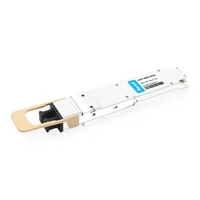 NVIDIA MMA4Z00-NS Compatible 800Gb/s Twin-port OSFP 2x400G SR8 PAM4 850nm 100m DOM Dual MPO-12 MMF Optical Transceiver Module
$750.00
NVIDIA MMA4Z00-NS Compatible 800Gb/s Twin-port OSFP 2x400G SR8 PAM4 850nm 100m DOM Dual MPO-12 MMF Optical Transceiver Module
$750.00
-
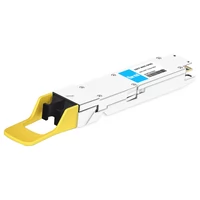 NVIDIA MMS4X00-NM Compatible 800Gb/s Twin-port OSFP 2x400G PAM4 1310nm 500m DOM Dual MTP/MPO-12 SMF Optical Transceiver Module
$1100.00
NVIDIA MMS4X00-NM Compatible 800Gb/s Twin-port OSFP 2x400G PAM4 1310nm 500m DOM Dual MTP/MPO-12 SMF Optical Transceiver Module
$1100.00
-
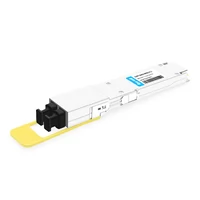 NVIDIA MMS4X00-NM-FLT Compatible 800G Twin-port OSFP 2x400G Flat Top PAM4 1310nm 500m DOM Dual MTP/MPO-12 SMF Optical Transceiver Module
$1200.00
NVIDIA MMS4X00-NM-FLT Compatible 800G Twin-port OSFP 2x400G Flat Top PAM4 1310nm 500m DOM Dual MTP/MPO-12 SMF Optical Transceiver Module
$1200.00
-
 NVIDIA MMS4X00-NS400 Compatible 400G OSFP DR4 Flat Top PAM4 1310nm MTP/MPO-12 500m SMF FEC Optical Transceiver Module
$800.00
NVIDIA MMS4X00-NS400 Compatible 400G OSFP DR4 Flat Top PAM4 1310nm MTP/MPO-12 500m SMF FEC Optical Transceiver Module
$800.00
-
 Mellanox MMA1T00-HS Compatible 200G Infiniband HDR QSFP56 SR4 850nm 100m MPO-12 APC OM3/OM4 FEC PAM4 Optical Transceiver Module
$200.00
Mellanox MMA1T00-HS Compatible 200G Infiniband HDR QSFP56 SR4 850nm 100m MPO-12 APC OM3/OM4 FEC PAM4 Optical Transceiver Module
$200.00
-
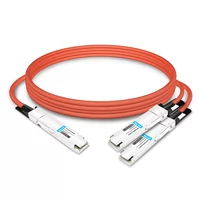 NVIDIA MCA7J60-N004 Compatible 4m (13ft) 800G Twin-port OSFP to 2x400G OSFP InfiniBand NDR Breakout Active Copper Cable
$800.00
NVIDIA MCA7J60-N004 Compatible 4m (13ft) 800G Twin-port OSFP to 2x400G OSFP InfiniBand NDR Breakout Active Copper Cable
$800.00
-
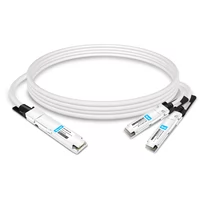 NVIDIA MCP7Y60-H01A Compatible 1.5m (5ft) 400G OSFP to 2x200G QSFP56 Passive Direct Attach Cable
$116.00
NVIDIA MCP7Y60-H01A Compatible 1.5m (5ft) 400G OSFP to 2x200G QSFP56 Passive Direct Attach Cable
$116.00
-
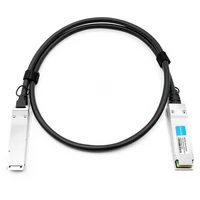 Mellanox MCP1600-E00AE30 Compatible 0.5m InfiniBand EDR 100G QSFP28 to QSFP28 Copper Direct Attach Cable
$25.00
Mellanox MCP1600-E00AE30 Compatible 0.5m InfiniBand EDR 100G QSFP28 to QSFP28 Copper Direct Attach Cable
$25.00
-
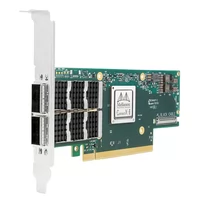 NVIDIA Mellanox MCX653106A-ECAT-SP ConnectX-6 InfiniBand/VPI Adapter Card, HDR100/EDR/100G, Dual-Port QSFP56, PCIe3.0/4.0 x16, Tall Bracket
$828.00
NVIDIA Mellanox MCX653106A-ECAT-SP ConnectX-6 InfiniBand/VPI Adapter Card, HDR100/EDR/100G, Dual-Port QSFP56, PCIe3.0/4.0 x16, Tall Bracket
$828.00
-
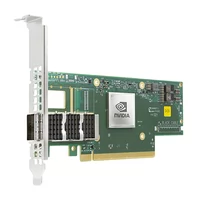 NVIDIA Mellanox MCX653105A-ECAT-SP ConnectX-6 InfiniBand/VPI Adapter Card, HDR100/EDR/100G, Single-Port QSFP56, PCIe3.0/4.0 x16, Tall bracket
$965.00
NVIDIA Mellanox MCX653105A-ECAT-SP ConnectX-6 InfiniBand/VPI Adapter Card, HDR100/EDR/100G, Single-Port QSFP56, PCIe3.0/4.0 x16, Tall bracket
$965.00
